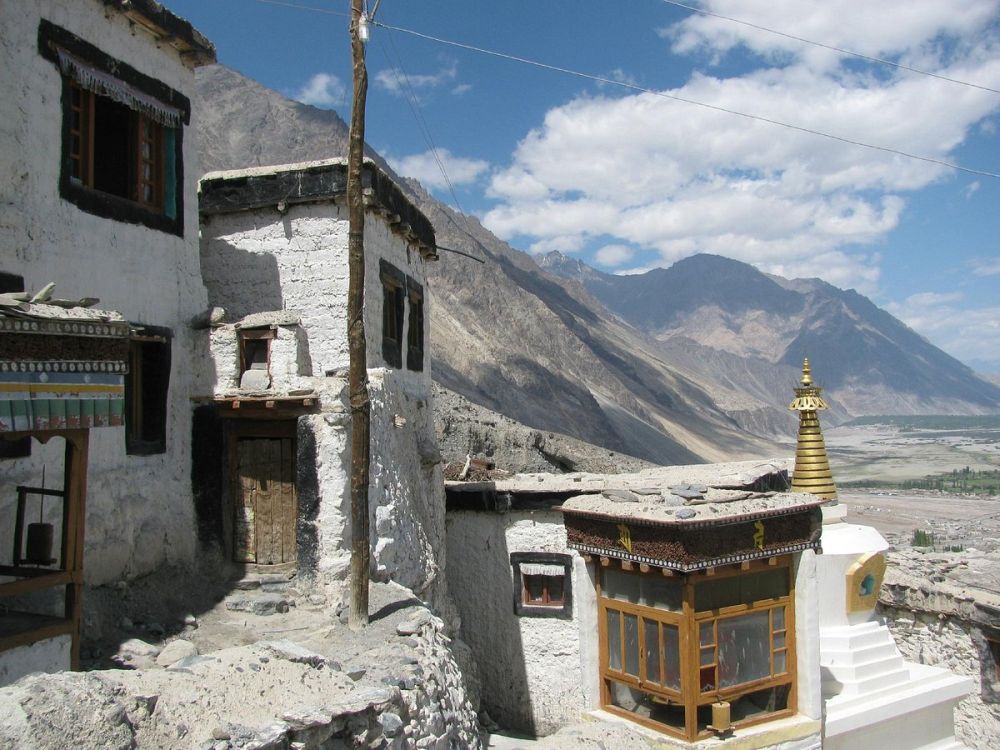

The Hundur Monastery, located in the heart of the cold desert of Ladakh, India, is a destination of deep spiritual significance and cultural heritage. The monastery is nestled in the picturesque Nubra Valley, not far from the prominent Diskit Monastery. It is believed to have been established around the same time as the Diskit Monastery, dating back to the 14th century, and has a close affiliation with the Gelugpa sect of Tibetan Buddhism.
The Hundur Monastery is a splendid emblem of the region's rich Buddhist legacy, thriving against the backdrop of the rugged Himalayas. Its history is interwoven with the lineage of the Dalai Lamas and other prominent Buddhist scholars. The serenity found in the monastery premises offers a glimpse into the monastic life that has been an integral part of Ladakh for centuries. It houses several statues, murals, and frescoes that are not only spiritually enriching but also masterpieces of Buddhist art.
The landscapes of Ladakh have captured the imagination of travelers for decades. The region opened to tourism in the 1970s, leading to a steady influx of visitors eager to explore its untamed beauty and spiritual depth. Tourism in Ladakh has witnessed a significant change over the years. From being a destination primarily for adventure enthusiasts and culture seekers, it has transformed into a multifaceted tourist hub catering to a wide array of interests.
While the larger monasteries like Hemis and Thiksey have traditionally drawn more tourists, Hundur Monastery has gained prominence for those seeking a more tranquil and intimate experience. As part of the famous Nubra Valley circuit, the monastery has become a key point of interest for travelers journeying through this high-altitude desert.
In recent years, there has been a conscious shift towards sustainable and responsible tourism in Ladakh, with an emphasis on preserving the unique ecology and cultural fabric of the region. Tourists are increasingly becoming mindful of their environmental footprint and are engaging with the local community in more meaningful ways.
Experiential travel is on the rise, with visitors looking to immerse themselves in local traditions, which the Hundur Monastery readily offers. Traditional homestays and community initiatives allow tourists to participate in daily prayers, meditation sessions, and even partake in local festivals like the annual Desmochhey or Mask Dance Festival.
With enhanced connectivity and the development of better infrastructure, Ladakh is becoming more accessible to a broader audience. Despite this, the sanctity of the Hundur Monastery remains protected, as authorities and the community strive to balance growth in tourism with the conservation of their cherished sanctuary.
Overall, the Hundur Monastery is a testament to Ladakh's enduring spiritual allure and cultural vibrancy. Its history is a cornerstone of Buddhist heritage in the region, while its role in contemporary tourism highlights a commitment to preserving such legacies for future generations to experience and revere. As Ladakh continues to evolve as a tourist destination, Hundur Monastery stands as a beacon of tranquility and an exemplar of the latest trends in mindful travel.